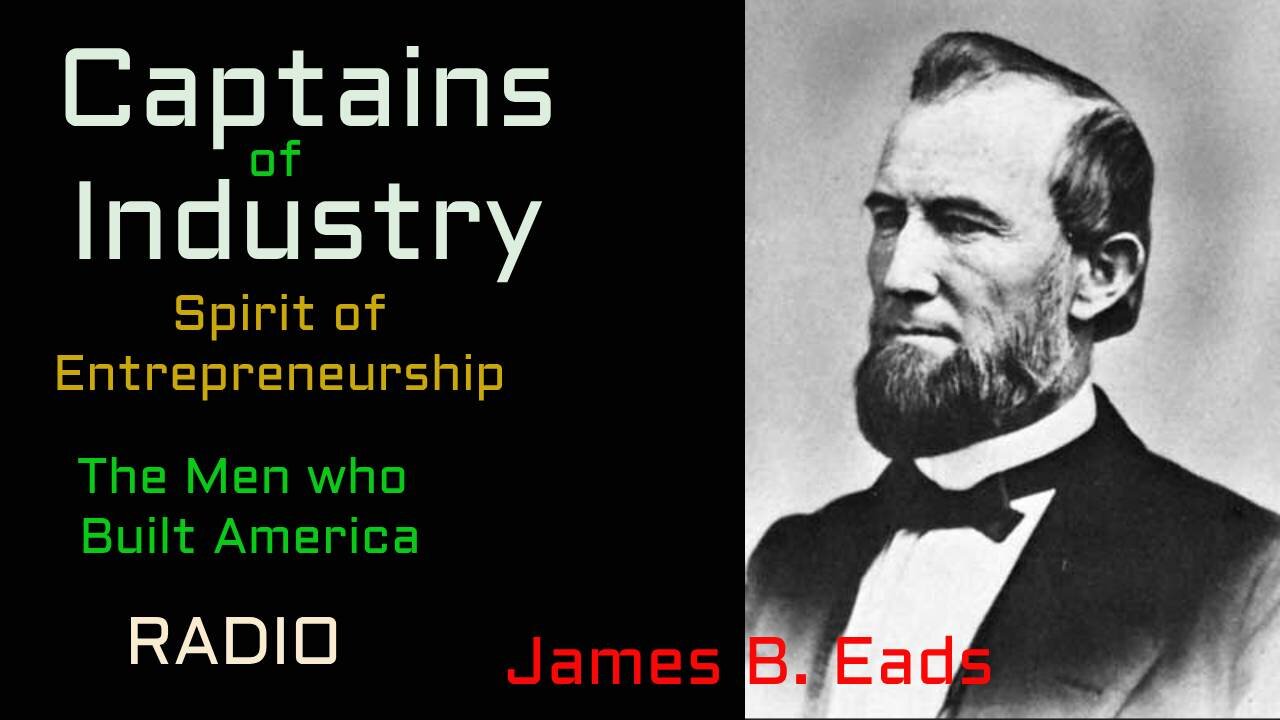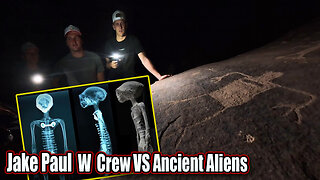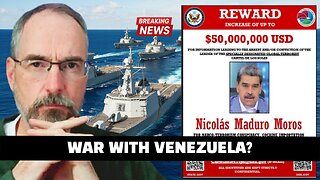Premium Only Content

Captains of Industry (ep12) James Eads
Captain James Buchanan Eads (May 23, 1820 – March 8, 1887) was a world-renowned American civil engineer and inventor, holding more than 50 patents.
Eads' great Mississippi River Bridge at St. Louis was designated a National Historic Landmark by the Department of the Interior in 1964 and on October 21, 1974 was listed as a National Historic Civil Engineering Landmark by the American Society of Civil Engineers. It was also awarded a Special Award of Recognition by the American Institute of Steel Construction in 1974 on the 100th anniversary of its entry into service. Eads' design for the jetties of the south pass of the Mississippi river was also designated as National Historic Civil Engineering Landmarks in 1982.
When he was twenty-two, Eads designed a salvage boat and showed the drawings to two shipbuilders, Calvin Case and William Nelson. Although Eads had no previous experience and no capital for the project, Case and Nelson were impressed with him and the three became partners.
At that time, salvaging wrecks from the Mississippi River was nearly impossible because of strong currents. Eads made his initial fortune in salvage by creating a diving bell, using a 40 US gal (33 imp gal; 150 L) wine barrel to retrieve goods sunk in riverboat disasters. He also devised special boats for raising the remains of sunken ships from the river bed. Eads did much of the diving himself because the work was so dangerous. His work gave Eads an intimate knowledge of the river, as he explored its depths from the Gulf of Mexico to Iowa. Because of his detailed knowledge of the Mississippi (the equal of any professional river pilot), his exceptional ability at navigating the most treacherous parts of the river system, and his personal fleet of snag-boats and salvage craft, he was afforded the much prized courtesy title of "Captain" by the rivermen of the Mississippi and was addressed as Captain Eads throughout his life.
Civil War
In 1861, after the outbreak of the American Civil War, Eads was called to Washington at the prompting of his friend, Attorney General Edward Bates, to consult on the defense of the Mississippi River. Soon afterward, he was contracted to construct the City-class ironclads for the United States Navy, and produced seven such ships within five months: St. Louis, Cairo, Carondelet, Cincinnati, Louisville, Mound City, and Pittsburgh. He also converted the river steamer New Era into the ironclad Essex. The river ironclads were a vital element in the highly successful Federal offensive into Tennessee, Kentucky and upper Mississippi (February–June, 1862). Eads corresponded frequently with Navy officers of the Western Flotilla, and used their "combat lessons learned" to improve vessels during post-combat repairs, and incorporate improvements into succeeding generations of gunboats. By the end of the war he would build more than 30 river ironclads.
The last were so hardy that the Navy sent them into service in the Gulf of Mexico, where they supported the successful Federal attack on the Confederate port city of Mobile. All senior officers in the Western Theater, including Grant and Sherman, agreed that Eads and his vessels had been vital to early victory in the West. The first four gunboats were built at the Eads' Union Marine Works in Carondelet, Missouri. The next three were built under Eads' contract at the Mound City (Illinois) Marine Railway and Shipyard. Eads' vessels were the first United States ironclads to enter combat. On January 11, 1862 the Eads-built ironclads St. Louis and Essex fought the Confederate gunboats CSS General Polk, CSS Ivy, and CSS Jackson at Lucas Bend, on the Mississippi River. Subsequently, on February 6, 1862, Eads' ironclads captured Fort Henry on the Tennessee River.[ This was over a month before the combat actions of the ironclads CSS Virginia and USS Monitor during the March 8–9, 1862 Battle of Hampton Roads.
During the war, Eads wrote a check to the War Department for $1,000 to help homeless Confederates and Union sympathizers. After the war, he held a fair to raise money for the thousands of homeless refugees in St. Louis.
-
 LIVE
LIVE
BEK TV
23 hours agoTrent Loos in the Morning - 8/29/2025
371 watching -
 LIVE
LIVE
Times Now World
3 hours agoLIVE News | “Diplomacy of Cannons Is Over” – Maduro Challenges Washington | Times Now World
1,520 watching -
 1:09:09
1:09:09
Dialogue works
1 day ago $0.28 earnedScott Ritter: NATO is FINISHED
6.42K4 -
 LIVE
LIVE
FyrBorne
12 hours ago🔴Warzone M&K Sniping: I Can Be Your Idol (For Sniping)
145 watching -
 LIVE
LIVE
The Real Tombliboos - Live Streaming
4 hours ago🔴CHARITY DRIVE🔴12 HOURS🔴Extra Life Charity🔴#ExtraLife #extralife4kids - Round 1
50 watching -
 17:54
17:54
Dr Disrespect
19 hours agoDR DISRESPECT vs VAN DAMME in Hitman 3
91.5K11 -
 34:26
34:26
CarlCrusher
13 hours agoJake Paul's Crew vs Ancient Skinwalker Canyon
15.2K2 -
 16:07
16:07
Chris From The 740
1 day ago $0.76 earnedMy BIGGEST Problem with the Ruger RXM – FIXED by Liberty Build Co!
9.34K1 -
 13:29
13:29
Professor Gerdes Explains 🇺🇦
13 hours agoUS Deploys Warships to Venezuela's Coast: A Show of Force Against Putin's Ally
8.76K1 -
 12:12
12:12
The Shannon Joy Show
14 hours ago🔥Carcinogens & Fetal Cells In Your New ‘Universal Vaccine’🔥
14.1K2